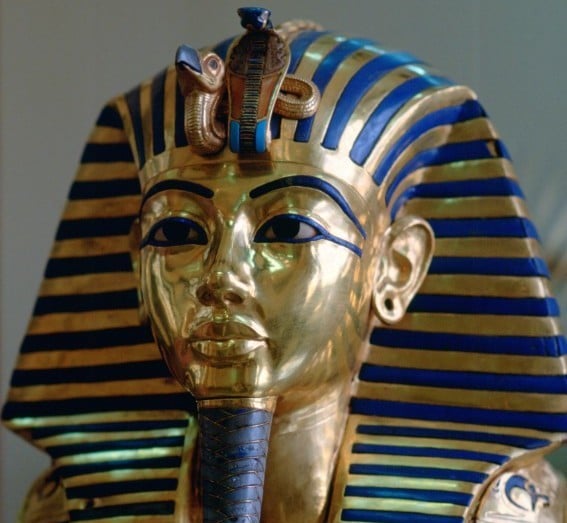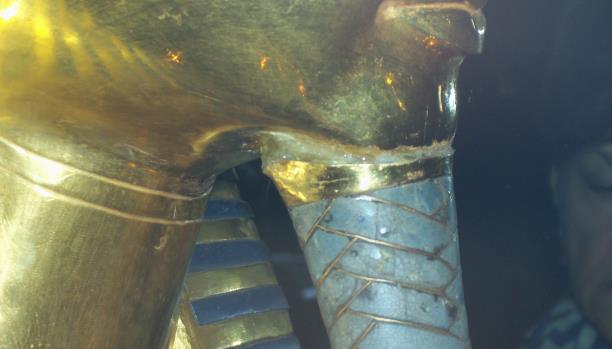Art & Exhibitions
King Tut Damaged in Botched Repair Attempt
A cautionary tale of conservation not being left to the experts.

A cautionary tale of conservation not being left to the experts.

Sarah Cascone

A botched restoration job has damaged the over 3,300-year-old funerary mask of King Tutankhamun. Museum workers hastily repaired the iconic artifact’s braided beard with a harsh epoxy, leaving a visible layer of yellowed glue under the boy pharaoh’s chin, according to London-based Arabic-language news site Al Araby Al Jadeed.
It should go without saying that conservation is a delicate art best left to the professionals, but somehow the staff at the Egyptian Museum in Cairo missed the memo. Something went wrong during an October cleaning of the mask, rich gold inlaid with semiprecious stones and colored glass. The beard either snapped off or was removed because it was loose.
Museum employees are required to inform the Ministry of Antiquities of damage to any artifacts to that specialists can be called in for repairs. For whatever reason, however, they abandoned this protocol. Several sources report that the head of the renovations team, Elham Abdelrahman, instead called in her husband, also a museum employee.
He allegedly tried fixing King Tut himself using household epoxy glue. Museum workers then scratched the priceless artifact when they used a spatula to try to remove epoxy that had dripped onto the sculpture’s face.

A layer of epoxy separates two pieces of King Tut’s funerary mask after a botch repair job. Photo: Al-Araby Al-Jedeed.
“The mask should have been taken to the conservation lab, but they were in a rush to get it displayed quickly again and used this quick-drying, irreversible material,” explained an anonymous conservator to the Associated Press, withholding his name for fear of reprisals. Conservators typically use reversible materials and techniques to allow for improved future methods, but the epoxy is reportedly permanent. The mask was quietly returned to view, with display lights dimmed to help distract from the poorly executed repairs.
Discovered by British archaeologist Howard Carter in 1922, the tomb of King Tut is one of the most important archaeological finds in history. Recent analysis suggests the boy king was in fact crippled and bore little resemblance to the strong-jawed young man depicted in the funerary mask. Archaeologists created a perfect facsimile of the tomb last year using 3-D laser scanning.